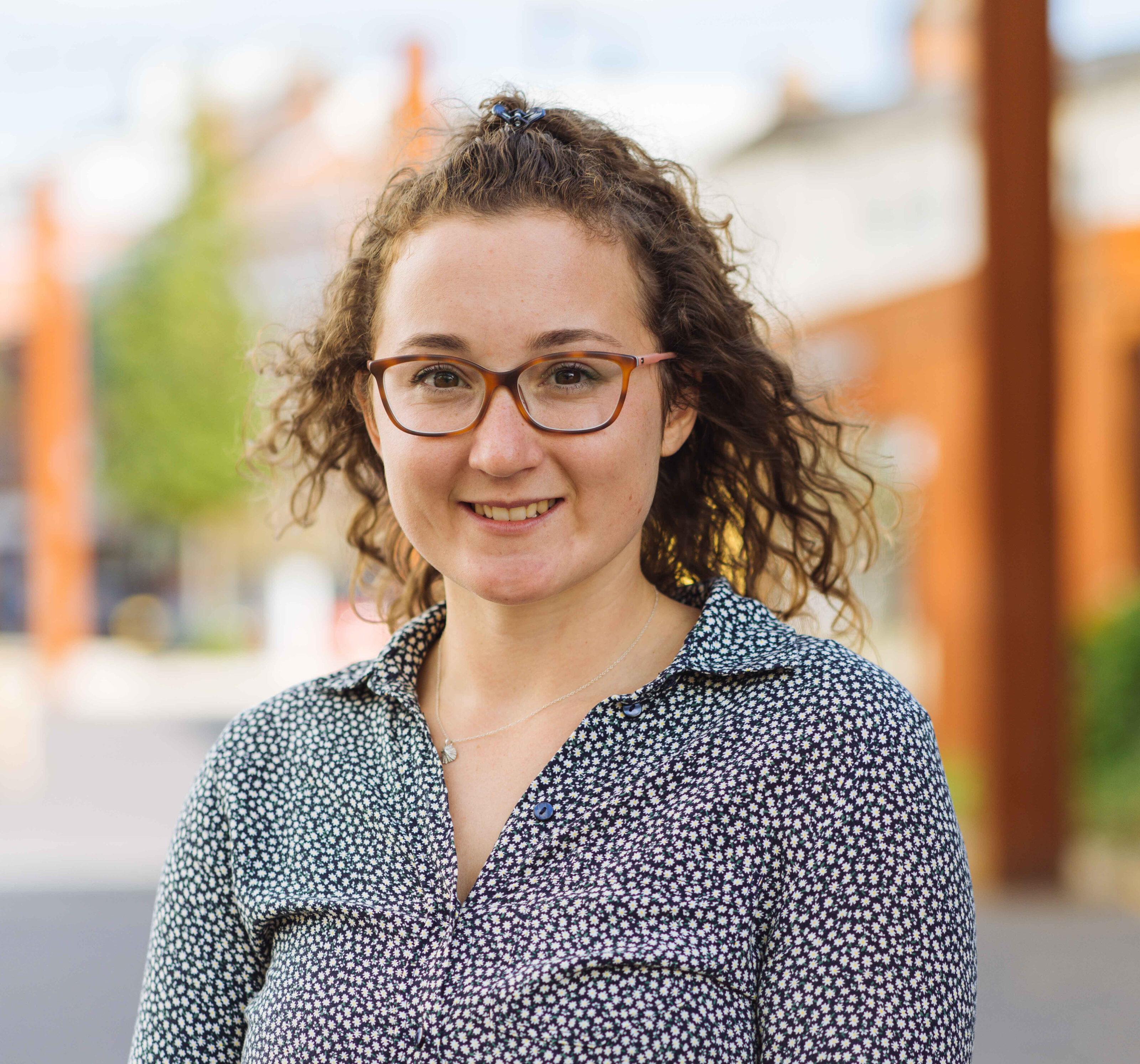This summer Define went on our annual overseas study trip, which this year was Lisbon. Our study trips are a great way to find design inspiration, and learn about both new and old architectural, urban design and landscape. It’s also a chance to get to know each other more and great for team building. It was especially nice for everyone to get to know Tim, who joined the Define team just a few weeks prior to the trip.
On our first day we headed for the waterfront to the south-west of the city centre, which has undergone heavy regeneration over the last few decades. The docks and industry along the river have given way to a series of public parks and plazas, and destinations such as the Lisbon MAAT (Museum of Art, Architecture and Technology). It also has a great cycle route along its length – tried and tested by Define!
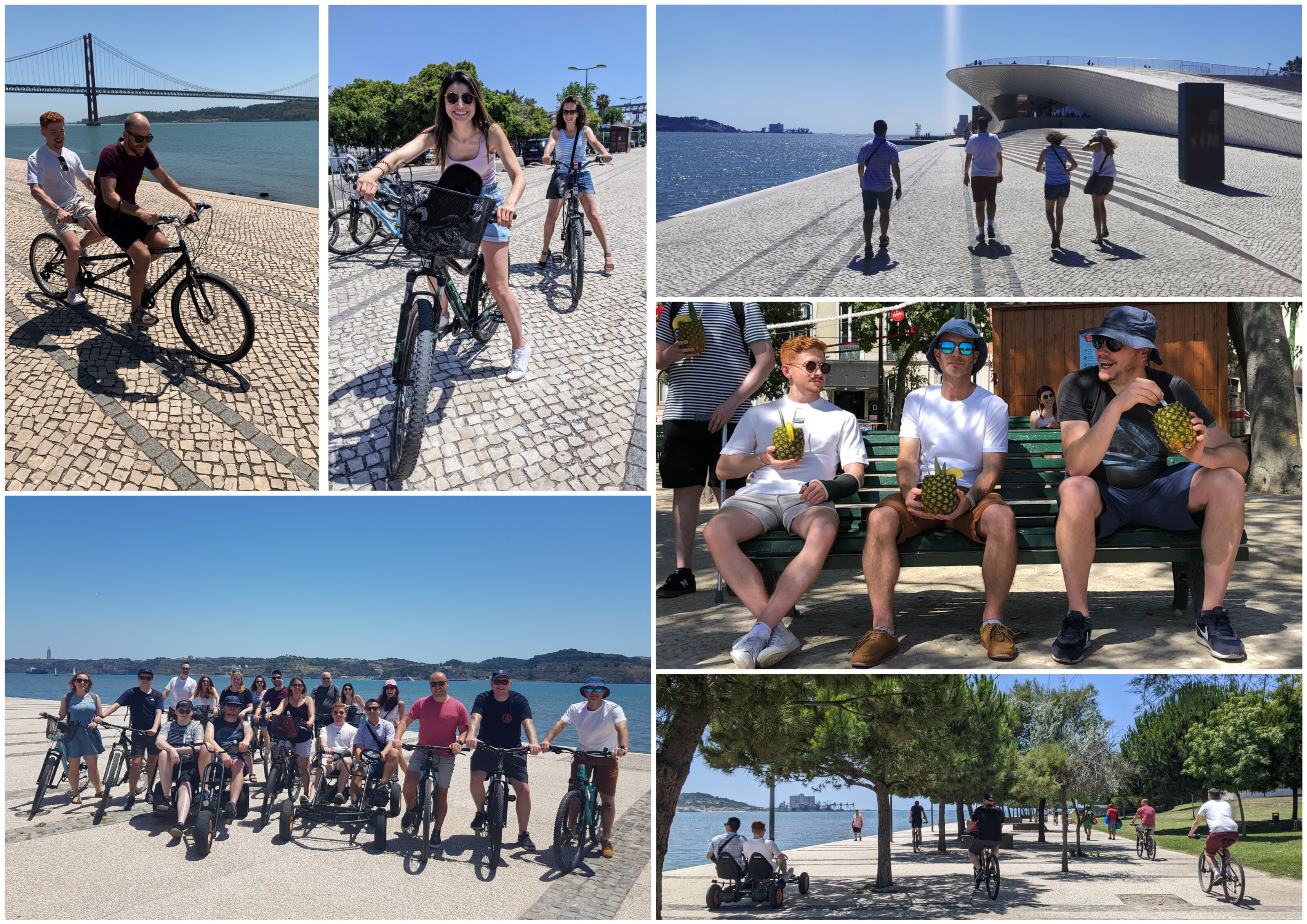 We also visited Parque dos Poetas (or “Poet’s Park”), located in Oeiras to the west of the centre of Lisbon. The park is a tribute to famous poets throughout Portugal’s history, and consists of a central route with engraved paving surrounded by green spaces, sculptures and a number of smaller, individual gardens each dedicated to a different poet. The park extends up a hill from the river and has some really stunning spaces – such as an amphitheatre and a sculptural viewing tower where people can take in panoramic views over the River Tagus and the sea. Sculptural elements and engraved text were particularly inspirational to the landscape team who are designing similar elements in some of our current detailed design schemes.
We also visited Parque dos Poetas (or “Poet’s Park”), located in Oeiras to the west of the centre of Lisbon. The park is a tribute to famous poets throughout Portugal’s history, and consists of a central route with engraved paving surrounded by green spaces, sculptures and a number of smaller, individual gardens each dedicated to a different poet. The park extends up a hill from the river and has some really stunning spaces – such as an amphitheatre and a sculptural viewing tower where people can take in panoramic views over the River Tagus and the sea. Sculptural elements and engraved text were particularly inspirational to the landscape team who are designing similar elements in some of our current detailed design schemes.
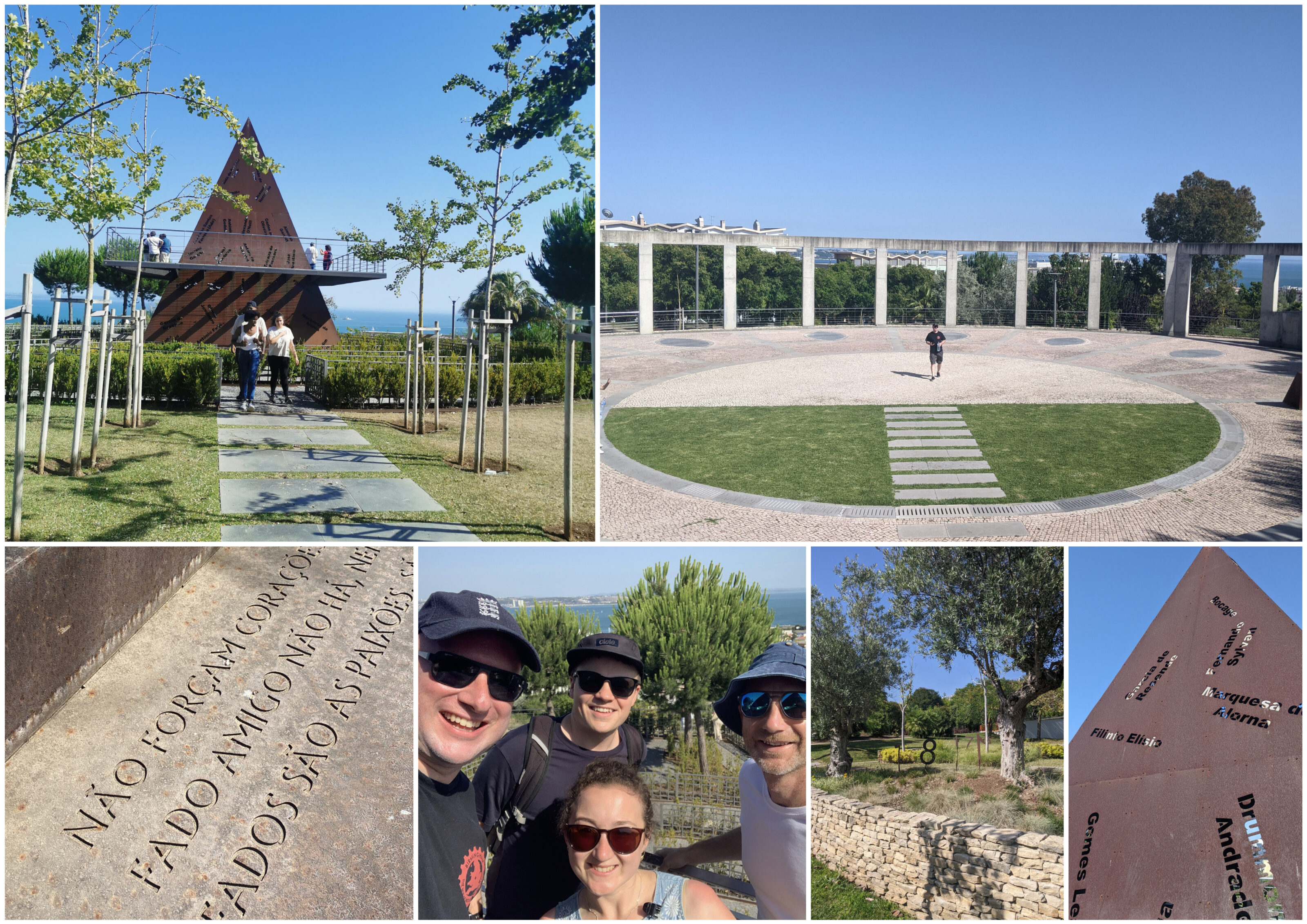
Parque dos Poetas
On day two we visited the area around the Expo ’98 regeneration zone to the east of the city centre, another impressive example of successful regeneration. The area is now home to shopping centres, countless restaurants and bars, conference and events centres and arts and culture destinations such as the Lisbon Oceanarium. Public spaces ranged from expansive multifunctional plazas, through smaller squares and lush green parks, to peaceful boardwalks along the waterfront. The Water Gardens were particularly welcome after a hot walk along the waterfront!
We then ended the day with a walking tour through the historic Alfama district, soaking up the history of this part of the city. It is one of the oldest parts of Lisbon, and with its trams and street musicians it felt very authentic and picturesque.
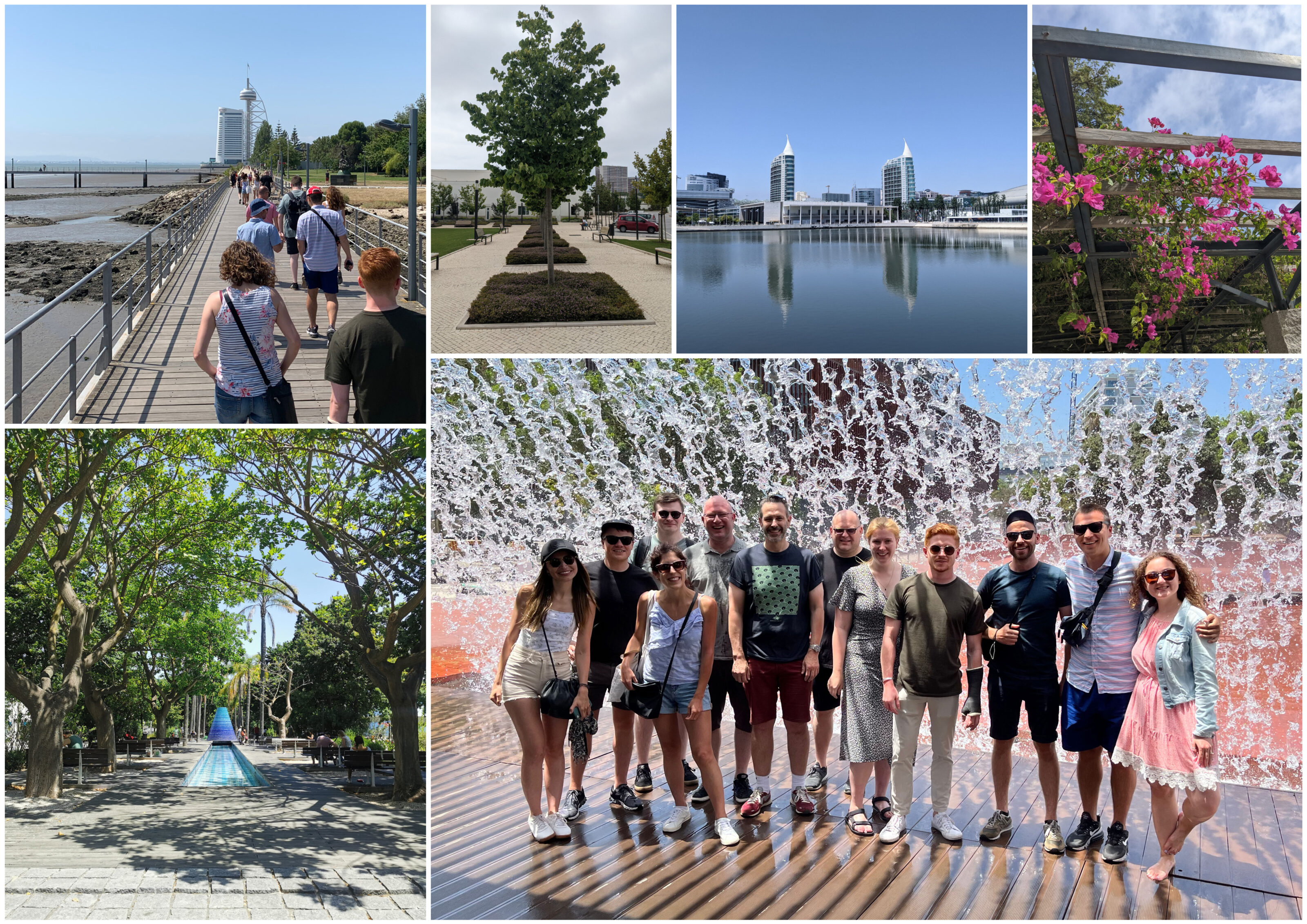
Expo ’98 regeneration zone
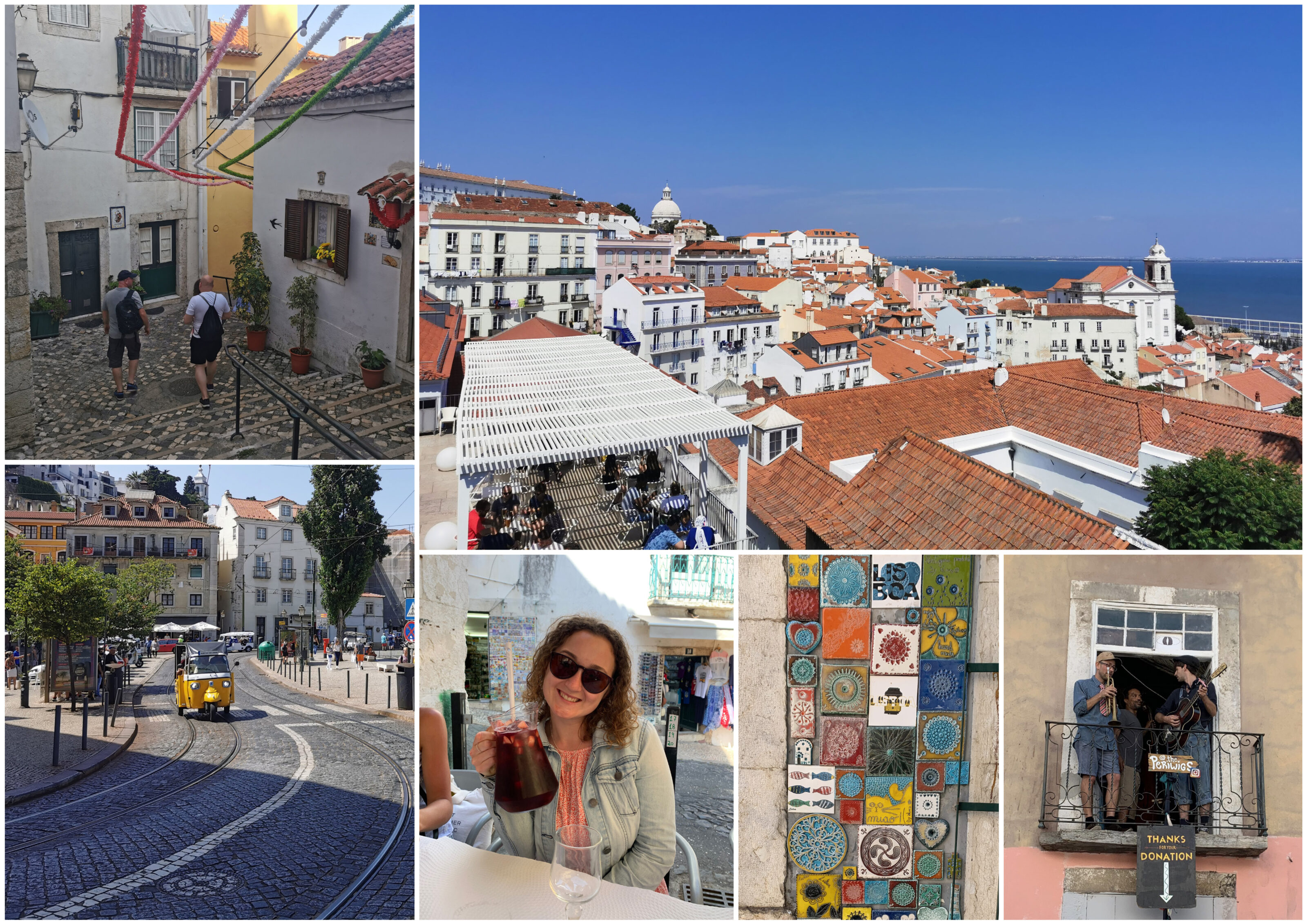
Alfama district
Our final morning was spent taking in the impressive Avenue da Liberdade and visiting the Gulbenkian Gardens. The gardens are a green oasis in the middle of a busy part of the city, and create a beautiful backdrop to the world-renowned Gulbenkian Museum. There are some beautiful landscape elements in the gardens – the calming mirror pools, numerous sculptures and the soft textures of plants and sculptures contrasting with the modernist concrete architecture of the museum.
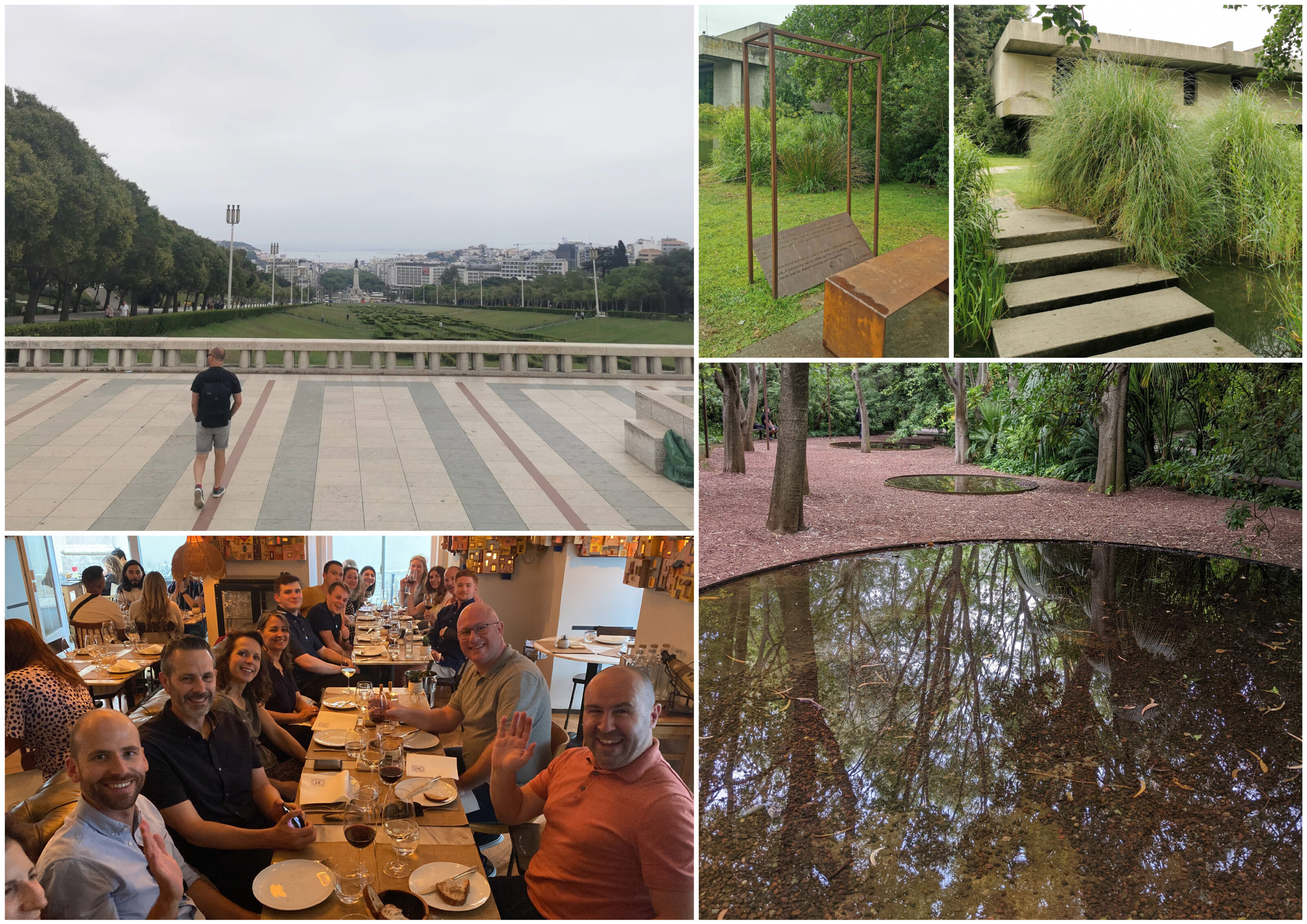
Avenue da Liberdade and Gulbenkian Gardens
